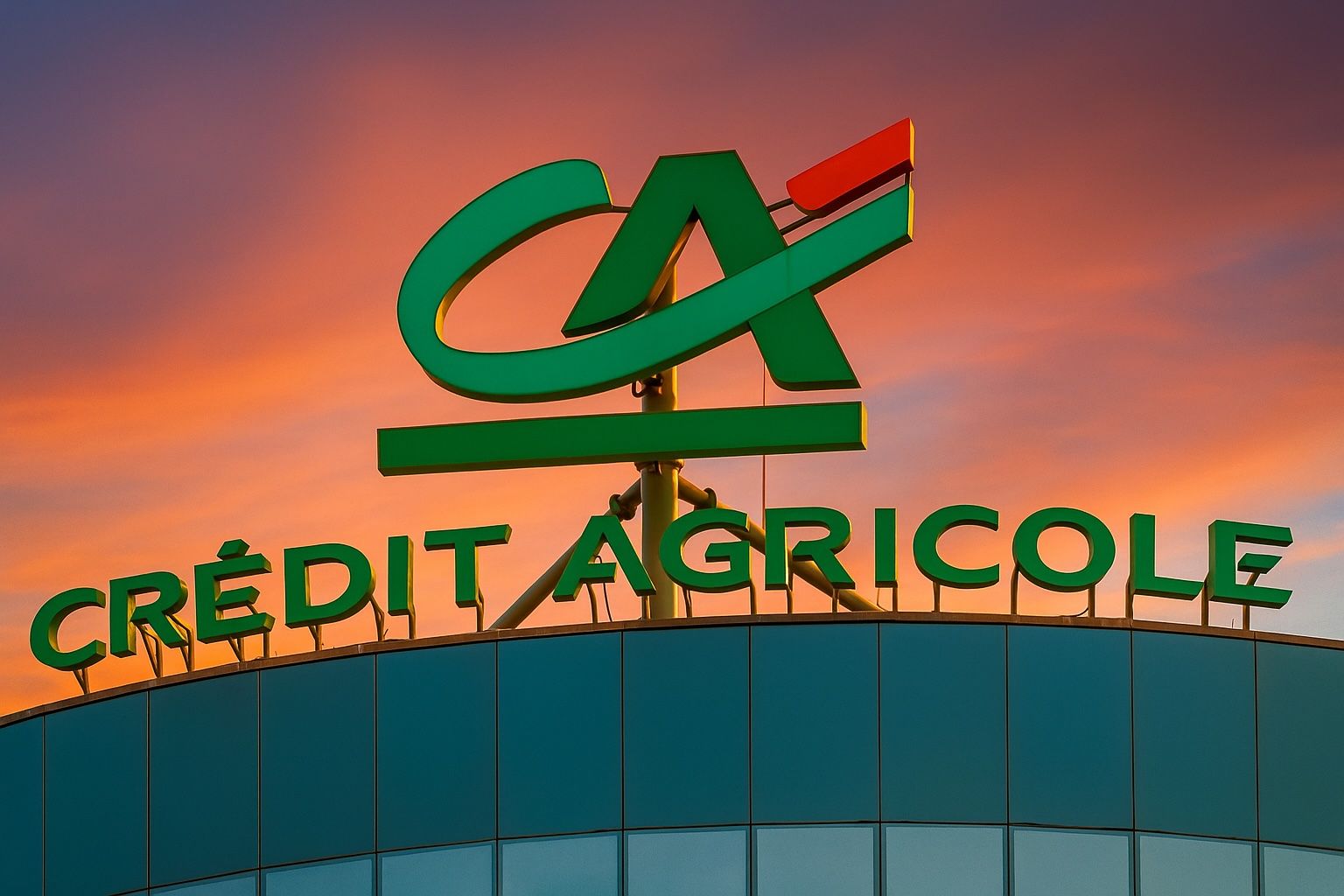- Union Opposes Bank Merger: Italy’s First CISL banking union warns that a potential merger of Banco BPM and Crédit Agricole Italia could put “hundreds of branches” at risk and lead to heavy job cuts, calling it a prospect they will oppose “with decision” [1] [2]. The union’s leader Riccardo Colombani argues the consolidation would trigger a “new wave of closures” with “grave risks for employment, families and businesses.” [3]
- Branch Closures Surge in 2025: Italian banks shut 268 branches in the first nine months of 2025, a 1.4% reduction in the network [4]. This has pushed the number of towns with no bank to 3,419 (43.3% of all municipalities) [5]. First CISL’s data show branch closures are accelerating, with more slated by year-end, and not just in rural areas – even major cities like Milan have seen above-average branch cuts [6].
- “Bank Desertification” and M&A: The union blames the branch “desertification” partly on a merger wave (dubbed the “risiko bancario”). For example, after acquiring Banca Popolare di Sondrio, rival bank BPER announced 90 branch closures, far above the 6 minimal closures antitrust regulators required [7]. A Banco BPM–Crédit Agricole tie-up would create Italy’s third-largest bank with about 2,425 branches, likely prompting overlapping outlets to shut – especially in Lombardy, Liguria and Emilia Romagna, which face the heaviest cuts [8].
- Government Sets Conditions: The Italian government has signaled it won’t block a BPM–Crédit Agricole deal but will invoke “golden power” rules to protect strategic interests [9]. Rome reportedly told Crédit Agricole it must guarantee continued lending to small businesses (Banco BPM’s core clientele) and safeguard assets like fund manager Anima Holding if the merger proceeds [10] [11]. Economy Minister Giancarlo Giorgetti said he has no “political objections” to a Franco-Italian bank tie-up, as long as these conditions are met [12].
- Market Reacts – Stock Near Highs: Banco BPM’s stock has surged amid merger speculation, recently trading around €12.6 per share [13] – up roughly 25% since mid-year. Deutsche Bank analysts raised their price target on Banco BPM to €13.30 (from €11.30), citing a higher likelihood of a Crédit Agricole deal [14]. They predict a merger would be “very much EPS accretive” (boosting earnings) in the first year and act as a positive catalyst for the stock [15]. Crédit Agricole SA’s own third-quarter profit beat forecasts largely thanks to a €245 million gain from revaluing its ~20% stake in Banco BPM [16], underlining investor optimism about the tie-up.
Union Sounds Alarm on Bank Merger
Italian bank workers’ union First CISL has delivered a stark warning about the rumored merger between Banco BPM and Crédit Agricole Italia. On October 31, the union publicly rejected the potential deal, saying it would come at a high social cost. “An eventual Crédit Agricole–Banco BPM operation will bring a new wave of branch closures [and] heavy cuts to jobs,” cautioned First CISL Secretary General Riccardo Colombani [17]. He stressed that hundreds of bank branches could shut if the two lenders combine, hurting not only bank employees but also local communities and small businesses that rely on nearby banking services [18]. The union considers this scenario “a prospect we oppose with determination.” [19]
Colombani pointed to a pattern of consolidation-driven layoffs and branch shutdowns – a phenomenon he termed “desertificazione bancaria” (banking desertification). “The data on major cities prove that bank desertification is not just a problem of remote areas,” he noted, indicating that even urban centers are losing bank branches [20]. First CISL’s new report (the 14th by its Fondazione Fiba research center) reveals that 268 bank branches closed in Italy from January to September 2025, and many more closures are already planned by big banks in the final quarter [21] [22]. This year’s retrenchment follows a longer trend of banks trimming their physical networks in favor of digital channels, often leaving behind “cashier-less” towns.
The union argues that mergers and acquisitions (M&A) in the banking sector are accelerating this “desertification.” In banking circles, the consolidation drive is dubbed the “risiko” – a reference to the game of Risk – as banks jockey for market share. “The risiko is reshaping the geography of Italian banking, and its effects on local territories are already evident,” Colombani said [23]. When larger banks absorb smaller rivals, branch networks often overlap, providing a pretext to slash redundant locations and staff. First CISL cites the recent BPER Banca takeover of Popolare di Sondrio as an example: regulators only required BPER to close 6 branches to avoid monopoly concerns, yet BPER announced 90 branch closures across northern and central Italy after the deal [24]. Colombani warns that a Crédit Agricole–BPM merger would be even more drastic: it would form “the third-largest bank by branches” in Italy with significant overlaps, inevitably prompting “new heavy job cuts” and service pullbacks in many areas [25].
“Desertification” – Communities at Risk
First CISL’s alarm is not just about banking jobs, but about access to finance in Italian communities. The union’s report paints a concerning picture of financial exclusion as branch offices vanish. As of September 2025, 3,419 municipalities – over 43% of all towns in Italy – have no bank branch at all [26]. This number has climbed steadily; by comparison, just a few years ago the majority of towns still had at least one bank. “The most fragile segments of the population and small firms are being penalized further,” Colombani said, noting that many have suffered for years from reduced credit availability in areas where banks withdraw [27]. The union argues that if local branches and even regional head offices (like Crédit Agricole’s Italian HQ in Parma) shrink or close, it can “impoverish the economies of those territories” by cutting off credit and investment [28].
The closures have hit some regions disproportionately. Basilicata, Marche and Veneto saw the sharpest branch reduction (each down ~2.5% in branch count in 9 months) [29]. Yet even wealthy Lombardy has lost branches – a trend driven not by depopulation, but by banks’ strategic moves. In fact, Lombardy’s importance is a big reason behind the current merger talks. “It’s no coincidence that recent M&A deals – both successful and failed, like UniCredit’s attempt on BPM – aim to strengthen grip on Lombardy, Italy’s richest region,” Colombani observed [30]. This contradicts the narrative that banks leave only because towns are shrinking; even booming cities have seen above-average branch cuts. For instance, from 2021 to 2025, “some large cities… recorded a percentage of closures higher than the national average”, according to First CISL’s data [31] (Milan alone saw nearly a quarter of its branches disappear, the union noted [32]).
The union fears that a BPM–Crédit Agricole merger would concentrate branch networks and could even lead to entire provinces having fewer banking services. They highlight that in such a merger, Lombardy would host a combined 765 branches of the new group (about 20% of all branches in the region) [33] – making it the top bank in Lombardy but likely accompanied by branch consolidation. Liguria would see the new entity hold 23% of branches, and Emilia Romagna about 18% [34], raising concerns that competing branches in the same towns would close. “The overlaps in some areas would provide the excuse for further cuts in staff,” Colombani warned [35]. The First CISL chief also argues that Italy should reconsider domestic bank concentration and instead pursue “European champions” – cross-border mergers that spread risk – to avoid a domestic duopoly that could reduce competition and jobs (a nod to Italy’s two giants, Intesa Sanpaolo and UniCredit, which dominate the market).
Government and Banks Weigh In
While unions sound alarms about layoffs and service gaps, bank executives and government officials have a different perspective on a potential BPM–Crédit Agricole deal. “We are attentive to everything that may happen,” Crédit Agricole’s Italy CEO Olivier Gavalda said when asked about interest in Banco BPM [36]. The French banking group has been steadily increasing its footprint in Italy – already Crédit Agricole’s largest foreign market, accounting for 15% of group profits [37]. In 2022 Crédit Agricole stunned the market by quietly buying a stake in Banco BPM; by this year it has built its holding to nearly 20% and has requested ECB approval to go up to 29.9% [38]. (Crossing 30% would typically trigger a takeover bid under Italian rules, so 29.9% is seen as positioning for a friendly merger.) All eyes are on Crédit Agricole’s Nov. 18 strategic plan presentation, where analysts speculate it could formalize an approach to Banco BPM [39].
Banco BPM’s own management appears open to a deal. CEO Giuseppe Castagna has openly discussed merger options after rebuffing an unsolicited approach by UniCredit in mid-2025. He stated that a combination with Crédit Agricole Italia represents the “clearest opportunity” for BPM’s future growth, although he noted a tie-up with state-backed Monte dei Paschi di Siena (MPS) is another possibility on the table [40]. (Banco BPM even owns a small stake in MPS, but MPS is currently preoccupied with acquiring investment bank Mediobanca [41].) Castagna’s signaling makes it clear that Banco BPM favors a friendly merger rather than remaining independent or risking a hostile bid. A union with Crédit Agricole’s Italian arm would create a stronger third player in Italy to better compete with Intesa and UniCredit, in line with policymakers’ long-term goal of having a third major banking group [42].
The Italian government, for its part, has adopted a cautiously supportive stance – welcoming market-driven consolidation but insisting on safeguards. Under Italy’s “golden power” law, the state can impose conditions or veto deals in strategic sectors like banking. In late September, Economy Minister Giancarlo Giorgetti said he had “no political objections” to a Banco BPM–Crédit Agricole merger, but emphasized that he “has a law to enforce” to protect key national interests [43] [44]. According to Reuters sources, Rome has already conveyed conditions in informal talks with Crédit Agricole executives [45] [46]. These include guarantees that the merged bank would continue lending to Italy’s small businesses (vital for the economy) [47], and assurances about Anima Holding, a domestically important asset manager Banco BPM acquired in 2025 [48]. The government is keen to ensure Italian savings and assets are not adversely affected by foreign ownership – a point Prime Minister Giorgia Meloni has underscored, saying Italian capital should stay invested in Italy [49].
In practice, this likely means any merger deal would come with conditions to avoid excessive layoffs and branch closures in underserved areas, aligning somewhat with the union’s concerns. Crédit Agricole has reportedly reassured officials it will meet Rome’s terms to get a deal done [50] [51]. That could entail, for example, commitments to keep financing SMEs (small and medium enterprises) and perhaps maintaining dual headquarters or key operations in Italy (such as Crédit Agricole Italia’s base in Parma) to mitigate local job losses. So far, the government’s tone has been pragmatic: as long as the merger strengthens the banking system without abandoning Italian communities, regulators seem inclined to approve it. In Giorgetti’s words, “I have no objections… there is a law and it applies to everyone.” [52]
Market Reaction and Stock Outlook
The merger speculation has been a boon for Banco BPM’s shareholders. The stock has rallied strongly in recent months as prospects of a deal grew. Banco BPM shares are trading around €12.6 on the Milan exchange [53], near their highest level in years after climbing roughly 30% since the summer. In fact, Crédit Agricole’s third-quarter earnings report revealed that Banco BPM’s rising share price contributed a significant one-off gain: Crédit Agricole’s CFO said Q3 net profit was boosted by €245 million thanks to marking up the value of its BPM stake [54] [55]. Without that boost, Crédit Agricole’s profit would have been flat – a clear sign of how much value investors now assign to a potential BPM combination.
Analysts largely view a BPM–Crédit Agricole Italia merger as a positive for both banks’ finances (if not for employee counts). Deutsche Bank, for example, upgraded Banco BPM’s stock in early October, maintaining a Buy rating and lifting the price target from €11.30 to €13.30 [56]. The higher target, they explained, reflects “a higher probability of a deal” after signs of serious talks involving the government [57]. Deutsche Bank’s note argued a merger would be “very much EPS accretive” – meaning it would raise Banco BPM’s earnings per share – in the first year post-merger [58]. The anticipated cost synergies (such as combining overlapping branches and IT systems) and revenue synergies (cross-selling products to each bank’s clients) could boost profitability. In the short term, the mere expectation of a deal is acting as a “positive catalyst” for BPM’s stock, the analysts said [59].
Other investors point to the strategic logic: Crédit Agricole would cement its position in Italy by fully integrating BPM, gaining a larger share of retail deposits and loans in a wealthy market. Banco BPM, in turn, would join forces with a well-capitalized international partner rather than remain a mid-sized standalone vulnerable to takeovers. This narrative of a “third pillar” in Italian banking has been circulating for years, and markets appear to be pricing in a decent chance it finally materializes. Banco BPM is even scheduled to report earnings on Nov. 6, 2025 [60], and analysts will listen for any hints on merger progress or negotiations in the conference call.
However, not everyone is celebrating. The union’s concerns highlight the social trade-offs of bank consolidation. If the merger goes ahead, it’s widely expected that duplications will be eliminated – meaning branch closures in areas where both BPM and Crédit Agricole currently operate, and potentially a reduction in workforce to cut costs. While such moves improve efficiency on paper and please shareholders, they come at the cost of jobs and local presence. First CISL warns that without countermeasures, the merger could exacerbate the already worrying “bank desert” in parts of Italy [61]. “We must consider the impact of downsizing, including possibly closing Crédit Agricole’s Parma headquarters,” Colombani argued, noting that removing decision-making centers from regions can weaken those local economies [62].
Outlook: Balancing Growth and Responsibility
As of early November 2025, the Crédit Agricole–Banco BPM courtship remains just that – no formal merger bid has been announced. But all signals suggest momentum is building. Government officials, bank CEOs, and investors are effectively laying the groundwork: Italy’s Treasury is outlining its red lines, Crédit Agricole is formulating its new strategic plan (with Italy at the forefront), and Banco BPM has signaled it’s ready to say “I do” should the right offer come. Many banking experts expect that by the end of 2025 or early 2026, a deal proposal could emerge, barring any last-minute political hurdles or a change of heart by either bank’s board.
If a merger plan is unveiled, the coming months would see intense negotiations with regulators and possibly with unions. First CISL has made clear it will demand protections for workers and customers. The union might push for job guarantees, retraining programs, or a slower timetable for branch integrations to avoid sudden layoffs. They may also advocate for maintaining branches in remote areas or special support for elderly customers who rely on physical banking. Some of these concerns align with the Italian government’s conditions – for example, ensuring credit continues to flow to small businesses and preventing an exodus of financial services from smaller towns [63]. Indeed, when announcing its opposition, First CISL appealed not just on behalf of employees but also on behalf of “families and small enterprises” that could suffer from a more concentrated banking sector [64].
Ultimately, Italy faces a tough balancing act. On one hand, consolidation can strengthen banks’ competitiveness and create a champion with the scale to invest in technology and weather economic storms. Banco BPM’s leadership and international observers note that merging with Crédit Agricole could create efficiencies and a more robust third force in Italian banking [65]. On the other hand, the country has already paid a price in terms of reduced bank access for many citizens, and further consolidation could deepen that divide if not handled carefully. The challenge for policymakers and bank executives will be to ensure that “synergies” don’t become a euphemism for abandoning communities that still need on-the-ground banking.
For now, the saga continues to unfold. The union’s vocal “no” has injected a social dimension into what is otherwise a high-stakes financial and strategic debate. As negotiations progress, expect more public statements from all sides – labor unions, local politicians, and consumer advocates – weighing in on what the future of Italian banking should look like. Will it be a new Franco-Italian banking giant driving efficiencies and profits? Or will safeguards and perhaps public pressure force a more tempered approach that protects local banking services? The answer will shape not just Banco BPM’s stock price or Crédit Agricole’s earnings, but the everyday financial reality for millions of Italians across the country.
Sources:
- First CISL (Italian Banking Union) – Press release and report on bank branch closures and merger impact [66] [67]
- ANSA News Agency – “No della First Cisl a BPM-Agricole, occupazione a rischio”, Oct 31, 2025 [68] [69]
- Reuters – “Credit Agricole’s Q3 profit climbs after revaluing BPM stake”, Oct 30, 2025 [70] [71]
- Reuters – Exclusive: Crédit Agricole in talks with Italian government on BPM deal conditions, Sep 30, 2025 [72] [73]
- Investing.com – Deutsche Bank raises Banco BPM price target on deal hopes, Oct 6, 2025 [74] [75]
- Borsa Italiana/Il Sole 24 Ore Radiocor – Bank branch closures data, Oct 31, 2025 [76] [77]
References
1. www.ansa.it, 2. www.ansa.it, 3. www.firstcisl.it, 4. www.ansa.it, 5. www.borsaitaliana.it, 6. www.firstcisl.it, 7. www.ansa.it, 8. www.ansa.it, 9. www.globalbankingandfinance.com, 10. www.globalbankingandfinance.com, 11. www.globalbankingandfinance.com, 12. www.globalbankingandfinance.com, 13. www.borsaitaliana.it, 14. www.investing.com, 15. www.investing.com, 16. www.reuters.com, 17. www.firstcisl.it, 18. www.firstcisl.it, 19. www.ansa.it, 20. www.firstcisl.it, 21. www.ansa.it, 22. www.ansa.it, 23. www.firstcisl.it, 24. www.ansa.it, 25. www.ansa.it, 26. www.borsaitaliana.it, 27. www.firstcisl.it, 28. www.firstcisl.it, 29. www.firstcisl.it, 30. www.firstcisl.it, 31. www.firstcisl.it, 32. www.firstcisl.it, 33. www.firstcisl.it, 34. www.firstcisl.it, 35. www.firstcisl.it, 36. www.reuters.com, 37. www.reuters.com, 38. www.reuters.com, 39. www.reuters.com, 40. www.reuters.com, 41. www.globalbankingandfinance.com, 42. www.reuters.com, 43. www.reuters.com, 44. www.globalbankingandfinance.com, 45. www.globalbankingandfinance.com, 46. www.globalbankingandfinance.com, 47. www.globalbankingandfinance.com, 48. www.globalbankingandfinance.com, 49. www.reuters.com, 50. www.globalbankingandfinance.com, 51. www.globalbankingandfinance.com, 52. www.reuters.com, 53. www.borsaitaliana.it, 54. www.reuters.com, 55. www.reuters.com, 56. www.investing.com, 57. www.investing.com, 58. www.investing.com, 59. www.investing.com, 60. finance.yahoo.com, 61. www.firstcisl.it, 62. www.firstcisl.it, 63. www.globalbankingandfinance.com, 64. www.firstcisl.it, 65. www.reuters.com, 66. www.firstcisl.it, 67. www.borsaitaliana.it, 68. www.ansa.it, 69. www.ansa.it, 70. www.reuters.com, 71. www.reuters.com, 72. www.globalbankingandfinance.com, 73. www.globalbankingandfinance.com, 74. www.investing.com, 75. www.investing.com, 76. www.borsaitaliana.it, 77. www.borsaitaliana.it










